Review of the development history of Honda CITY for four generations
Third, the historical review of the ITY car system
● The first generation of CITY(1996 -2002)
As mentioned earlier, in 1996, Honda named the successor model of the second generation of CITY as Logo, and at the same time gave the name of CITY to a brand-new model put into production by Honda in Thailand. The internal code of the first generation Honda CITY is SX8, which is a car based on the old fourth generation Civic platform (the fourth generation Civic production year: 1987 -1991, the fifth generation Civic production year: 1991 -1995, and the sixth generation Civic production year: 1995 -2000).

Although the first generation of CITY comes from Honda’s old vehicle platform, it has the advantages of mature technology and low cost, which is in line with its positioning as a national car of developing countries in Asia. The first generation Honda CITY was first put into production in Thailand in April 1996, and 70% of its parts were purchased locally. By February 1997, CITY had sold 14,352 vehicles, accounting for 66% of the market share of Thailand’s vehicles under 450,000 baht (about 80,000 RMB). Following Thailand, the first generation of CITY was put into production in Philippine, Malaysian, Pakistani, Indian and other countries, but the car was not introduced to China.
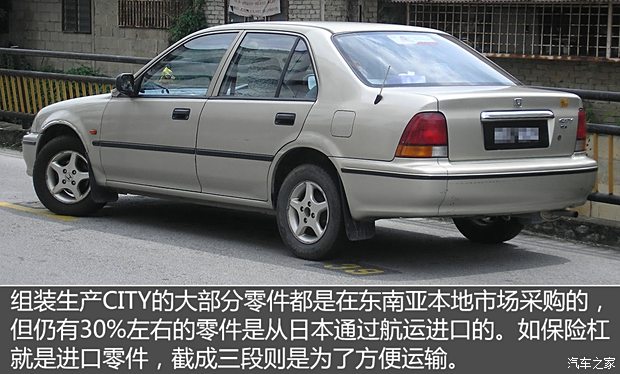
The first generation Honda CITY has only one sedan, so its body size is almost the same as the sedan version of the fourth generation Civic, with a length, width and height of 4270mm×1690mm×1395mm and a height of 2500 mm.. However, the shape of the first generation Honda CITY has been redesigned, which is more in line with people’s aesthetic standards for cars in the 1990s. Its overall shape is simple and generous, and its body proportion is coordinated.
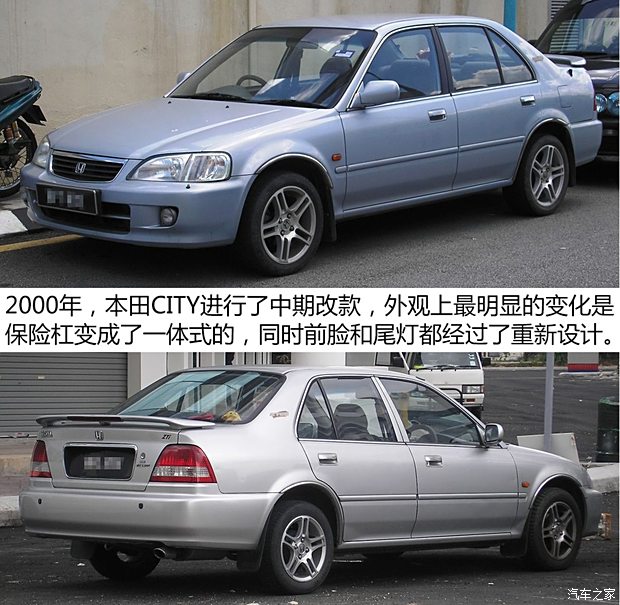
The most obvious feature of the previous version is that the fog lamp is located at the lower air inlet, and the body rubbing strip, exterior rearview mirror and door handle are all black. At the same time, the front and rear bumpers are made up of three sections. According to the introduction, this is mainly to facilitate the parts to be transported from Japan to Thailand, Malaysia, the Philippines and other sub-countries by shipping, and then assembled and produced after reaching the destination. The first generation of CITY was redesigned in the middle of 2000, and the later version was called CITY type Z in some countries. The front face and taillights of the new car were redesigned, and the integrated front and rear bumpers were replaced.
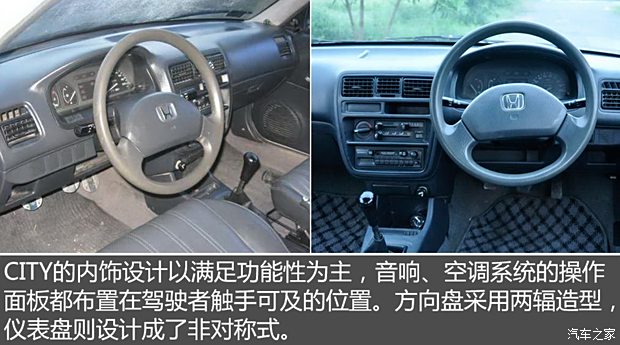
The design of the interior part is mainly to reflect practicality. The center console is dark gray in overall, and the layout is simple and regular. The steering wheel adopts a two-spoke shape with spokes at 4 o’clock and 8 o’clock. The asymmetric instrument panel is unique. Two small dials, the fuel gauge and the water temperature gauge, form the left semicircle, and only one speedometer dial is arranged in the right semicircle. The central control panel in the T-shaped area is designed as an inverted trapezoid, which is horizontally divided into four layers. The top layer is a set of square air outlets, the second layer is a storage compartment, and the lower two layers are the operation panels of the harmony sound system.

In terms of power, the first generation Honda CITY was originally equipped with a 1.3-liter inline four-cylinder Honda D13B, with a maximum of 95 horsepower. The transmission system was matched with 5-speed manual or 4-speed, with an acceleration time of 11.3 seconds from 0 to 100 km/h and a top speed of 171 km/h. Subsequently, a version equipped with Honda D15B 1.5-liter inline four-cylinder engine was added, with a maximum power of 103 HP. In 2001, Honda CITY launched a version equipped with a 1.5-liter VTEC engine with a maximum power of 115 HP. In the chassis part, the first generation of CITY originally adopted the independent front+McPherson independent rear suspension. However, Honda found that the competitors of the first generation of CITY were hardly equipped with independent rear suspension, so for cost reasons, CITY also cancelled the independent rear suspension.
● Second generation Honda CITY(2002 -2008)
In November 2002, the second generation Honda CITY made its debut at the Thailand International Automobile Expo. The new car no longer adopted the Honda Civic platform, but changed to the same Honda global platform as the first generation Fit, but its positioning has not changed, and it is still Honda’s entry-level sedan.
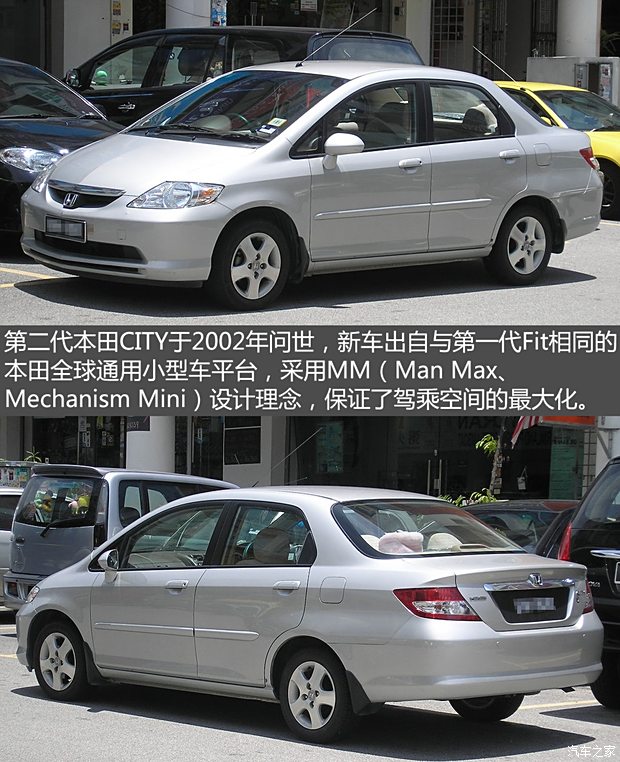
The second-generation Honda CITY also has only a sedan body structure, but the driving mode is not only the front drive, but also an additional version. In terms of body size, the length, width and height of the previous version are 4310mm×1690mm×1485mm, and the wheelbase is 2450mm;; In September, 2005, the second generation of CITY was redesigned in the mid-term, and the length of the car in the later version was increased, with the front part lengthened by 65mm and the rear part lengthened by 15 mm..
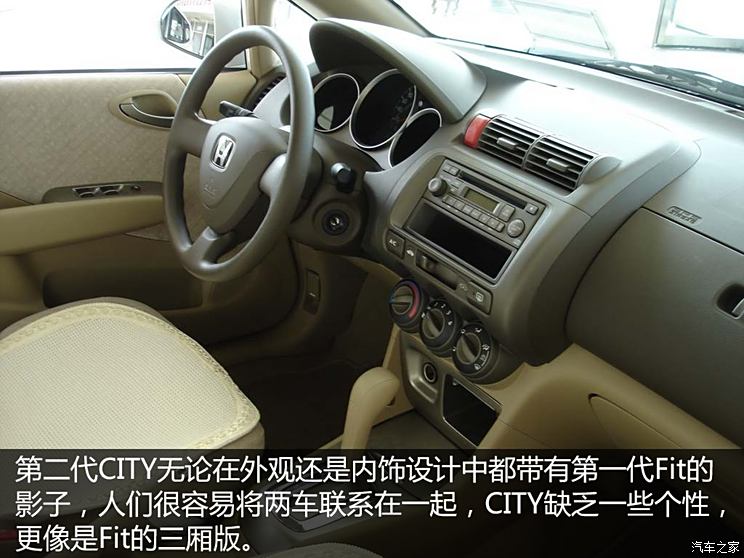
The second-generation CITY adopts the same MM design as the first-generation Fit, that is, Man Max (Maximizing Passenger Space) and Mechanism Mini (Minimizing Machine Occupancy), and its stylish appearance has many similarities with the first-generation Fit, especially the front contour is easy to connect the two cars. The interior design is exactly the same, and the overall layout of the center console of the two cars is exactly the same, with only minor differences in the details. The later version mainly redesigned the front and rear of the car to make the car look more dynamic.
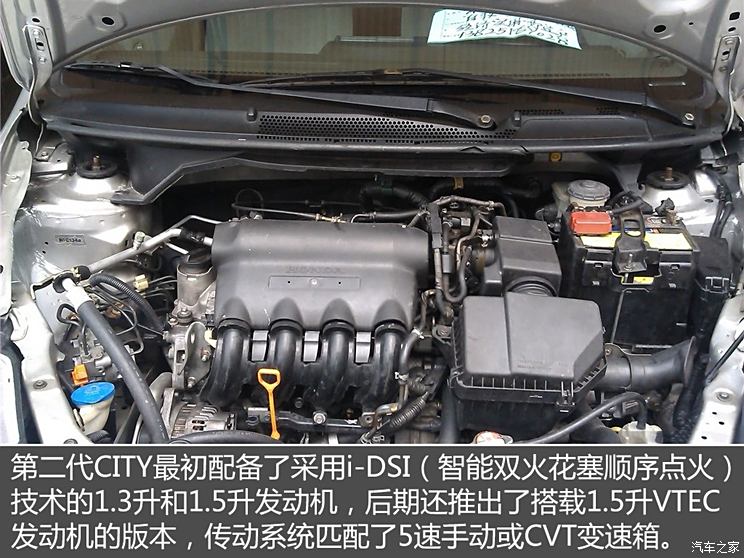
In terms of power, the second-generation CITY was originally equipped with Honda L series 1.3-liter and 1.5-liter inline four-cylinder engines. i-I (Intelligent Double Sequential Ignition) technology was adopted, and each cylinder was equipped with two spark plugs. The ignition timing was adjusted according to the engine speed, load and other factors, and the intake vortex was used to realize rapid and sufficient lean combustion, thus improving the engine power and reducing the fuel consumption of the whole vehicle. Subsequently, a version equipped with a 1.5-liter VTEC engine was introduced, and the transmission system was matched with a 5-speed manual gearbox or gearbox. In the chassis part, the second-generation CITY is equipped with the same McPherson independent front suspension+torsion beam semi-independent rear suspension as the first-generation Fit, and adopts a unique fuel tank center structure.
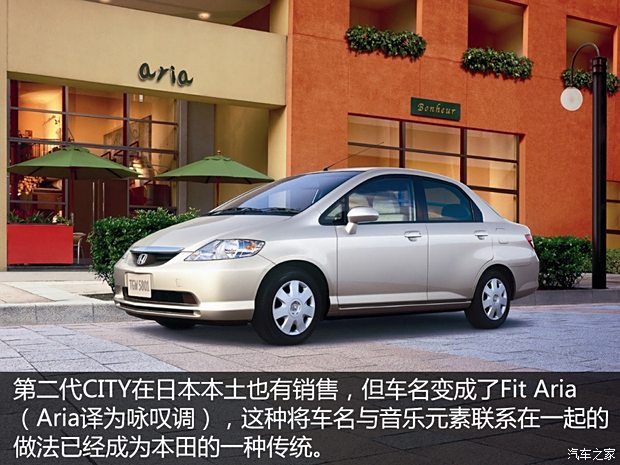
The second generation Honda CITY is no longer just an exclusive model for the Southeast Asian market. The car has also been put into production in the Japanese Honda saitama narrow mountain factory and the Guangzhou Honda (renamed Guangqi Honda in 2009) Huangpu factory in China. Honda launched the second generation CITY in Japan in December 2002, but the name of the car changed to Fit Aria. Aria translated into aria is usually a lyrical and dramatic solo passage in drama. This name is mainly used to continue Honda’s tradition of naming cars with music. For example, Honda’s Prelude, Accord, Ballade, Quintet and Concerto also have car names related to music.
☆ The second generation Honda CITY is in China.
In the China market, the second generation Honda CITY was first launched in 2003, and the domestic version was originally named (Fit Saloon, which China car owners used to call the Fit). On September 16 of the same year, it was rolled off the assembly line in Guangzhou Honda (renamed Guangqi Honda in 2009) and listed in the whole country on September 28. The first to be put on the market is the Fit Saloon)1.3-liter 5-speed manual version, which costs 99,800 yuan. Subsequently, the sedan Fit introduced 1.3-liter CVT version, 1.5-liter 5-speed manual version and 1.5-liter CVT version with a price of 10.98-119,800 yuan.
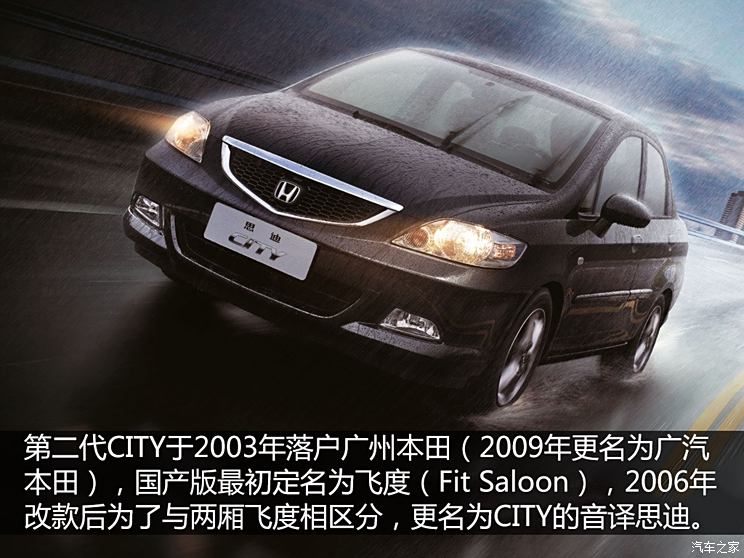
The mid-term modified model was rolled off the assembly line in Guangzhou Honda on March 29th, 2006 (renamed Guangqi Honda in 2009) and listed on April 8th of the same year, with the price of 96,800-124,800 yuan. The new car no longer uses the name of the Fit sedan, but is renamed as Sidi, a transliteration of CITY, which stands for Creative (Creative Leading), Intelligent (Outstanding Wisdom), True (True Personality) and Youth (Young Vitality). In August 2008, Sidi launched a small modified model. The new Sidi has the only skylight developed by Honda for the China market in the world. The new car was launched in September of the same year, with a price of 938-124,800 yuan.